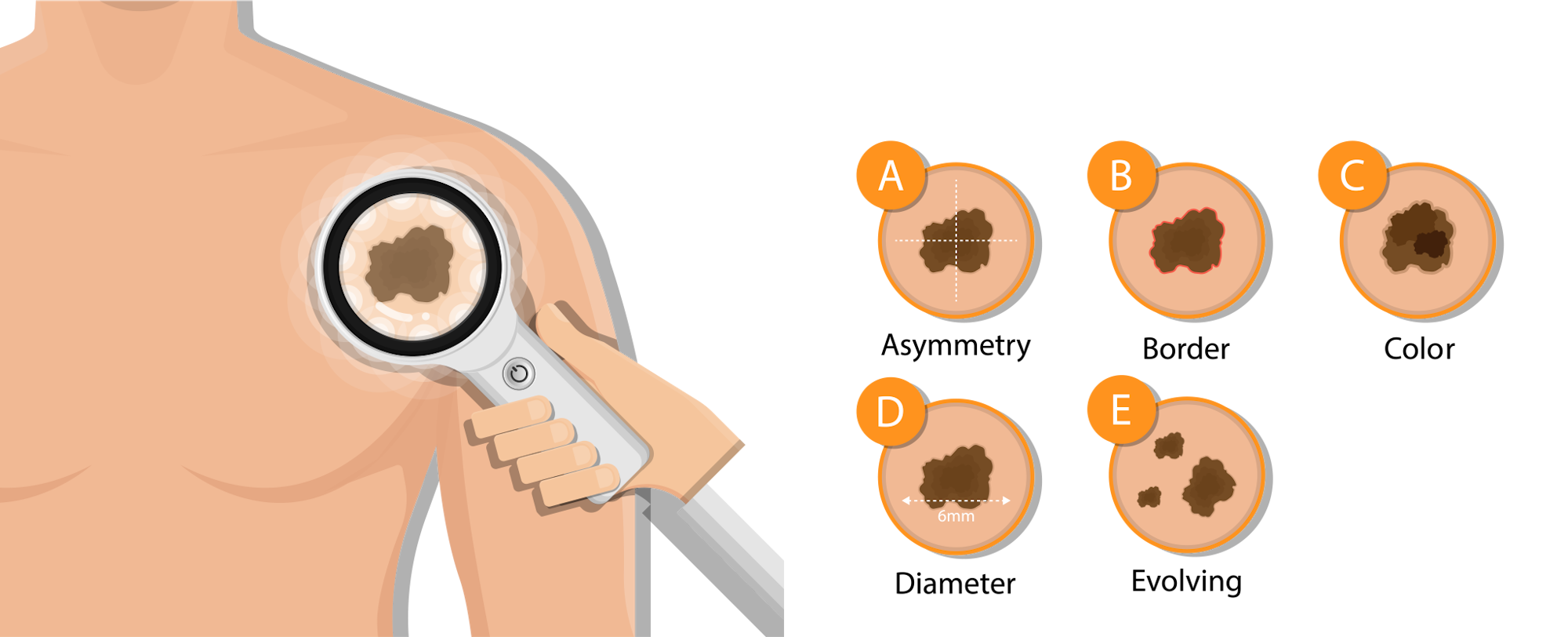Data: Skin Cancer And Firefighters

January 4, 2023 | Alex Terlecky
Recent studies have placed firefighters in a category of elevated risk
Skin cancer can affect everyone, but recent epidemiologic studies have found an elevated risk for skin cancer among firefighters when compared against the general population. This is due, primarily, to the fact that firefighters are exposed to carcinogenic chemicals on their skin and gear following fire-incident response. In this article, we’ll discuss the types of skin cancer, the causes, prevention tips, and supporting data.
What is Skin Cancer?
Skin cancer, according to the Mayo Clinic, is the abnormal growth of skin cells. There are three major types which include basal cell carcinoma, squamous cell carcinoma, and melanoma.
Basal cell carcinoma begins in a type of cell within the skin that produces new skin cells while old ones die off. Mutated DNA in the basal cell tell the cell to multiply rapidly and continue growing when it would normally stop. Ultimately, the accumulation may form a cancerous tumor in the form of a lesion on the skin. Signs of this type of cancer appear as a slightly transparent bump on the skin, among other forms. Risk factors for this type include exposure to arsenic, a toxic metal found widely in the environment.
Squamous cell carcinoma develops in the squamous cells making up the middle and outer layers of skin. This type of cancer is not usually life-threatening, but it can be aggressive and, if left untreated, can cause serious complications.
It can occur commonly on areas most often exposed to the sun, but since these cells are found all over the body, it can also occur in unexpected places like the bottoms of feet, on genitals, and inside of the mouth. Symptoms include the presence of a firm, red nodule, a flat sore with a scaly crust, a rough scaly patch on the lip, or a red sore or rough patch inside the mouth.
Melanoma is the most serious type of skin cancer and develops in cells that produce melanin, which is the pigment that gives skin its color. This type of cancer is the most serious because it can form in places like your eyes, and in rare cases, your nose and throat.
Melanomas can develop anywhere on the body, but commonly appear in areas that have had exposure to the sun, while also appearing in less prominent places such as the palms of hands and fingernail beds. Hidden melanomas in these locations can be problematic for people with darker skin. Melanoma first appears as a change within a pre-existing mole or from the development of a new pigmented or unusual looking growth on skin; however, it does not always begin as a mole.
While most skin cancer is caused by exposure to UV light, firefighters are prone to these types of cancers due to different reasons that involve their profession and risk exposure on the job.

Firefighters and Skin Cancer
Firefighters are 14% more likely to die of cancer than the general population. Risk goes up due to exposure to smoke and pollution from building materials and wildfire. Beyond that, new information is emerging suggesting firefighting gear that includes high levels of perfluorinated chemicals, known by their acronym, PFAS, is a cause of cancer. However, it has not been directly correlated to causing skin cancer, specifically.
Nonetheless, the data connecting firefighters and skin cancer is concerning.
In a September 2022 study, researchers concluded that exposure to wildfire-related PM2.5 can increase the risks of cancer mortality for many cancer sites, including skin, and the effect for wildfire-related PM2.5 was higher than for PM2.5 from non-wildfire sources.
A 2017 study showed that among the firefighters sampled, the median age of diagnosis for melanoma was 42 years, which was younger than the median age of diagnosis in the general US population of 64 years.
In 2019, the latest year for which incidence data are available, in the United States, 88,059 new cases of melanomas of the skin were reported, and 8,092 people died of this cancer. For every 100,000 people, 23 new melanomas of the skin cases were reported and two people died of this cancer.
In Colorado, specifically, in 2019, there were 1,351 new cases of melanomas of the skin. For every 100,000 people, 21 melanomas of the skin cases were reported. The same year, there were 172 people who died of melanomas of the skin. For every 100,000 people in Colorado, three died of melanomas of the skin.
Prevention Tips
Even with unfavorable evidence linking those in the firefighting profession to higher rates of skin cancer, there are many steps firefighters can take to prevent or mitigate their risk that comes in the form of early detection.
Early detection training for fire departments can help educate firefighters about the signs and symptoms of cancer, can help them pay attention to health changes in their own body, empower them to seek timely care, and also assist in discussions with their physicians. The non-profit company DetecTogether offers fire departments excellent materials that can help fire departments implement this early detection program within their organization.
Early detection has another component beyond training: cancer screenings.
The Galleri blood test is a simple test ordered by a healthcare provider that draws blood and provides results on more than 50 types of cancer, including melanoma and merkel cell carcinoma.
HealthOne also offers annual health exams, cancer screenings, and even genetic testing to provide you with insight on your predisposition to certain cancers. Firefighters can schedule a wellness program appointment at Centennial Primary Care in Centennial, CO by visiting their website.
CFHC Trust
Fire departments across Colorado also have an opportunity at providing staff with voluntary cancer benefits through the Colorado Firefighter Heart and Cancer Benefits Trust. This program, which is administered by the same company that administers the CSD Pool, was created to help fire professionals and agencies manage the human and financial burdens created in the wake of a cancer diagnosis. This program allows fire departments to move cancer coverage out of workers’ compensation and provide quicker benefit payouts to employees.
If you are a fire department and a member of the CSD Pool, you must join the Cancer Award Program by January 1, 2023 in order to maintain workers’ compensation coverage. The majority of this program’s cost is paid for by the CSD Pool.
For more information, visit cfhtrust.com or email cfhtrust@mcgriff.com.
